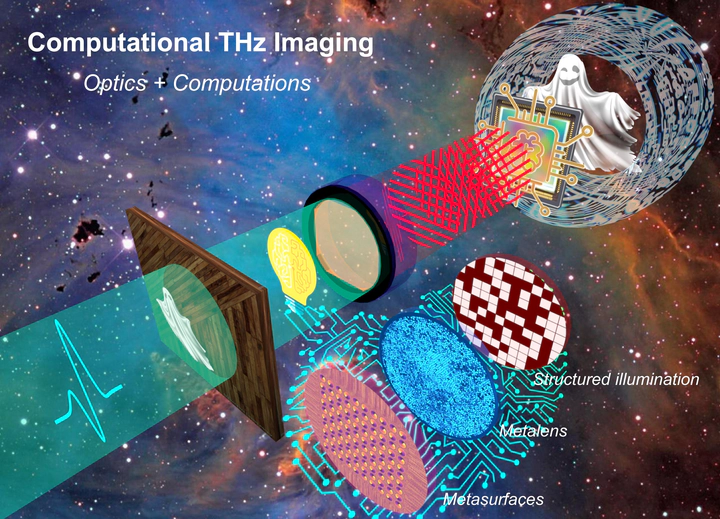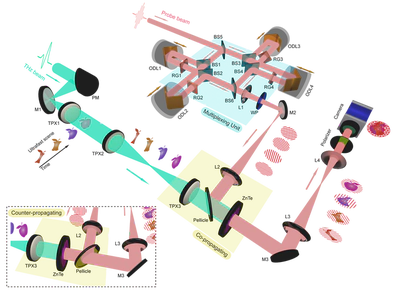Computational THz imaging

Over the past two decades, THz imaging has evolved from an intriguing concept into a vibrant research field with significant scientific and commercial impact. Despite this progress, current THz imaging systems still suffer from some intrinsic challenges, such as large footprints, low acquisition speed, and low spatial resolutions. In addition, key devices are in sore need of improvements, such as compact THz sources, high-speed THz modulators, and high-sensitivity THz cameras.
Our research aims at developing the next-generation THz imaging systems that synergistically combine optics and computations. Such systems involve the joint design of the hardware (components, sensors, and devices) and computer algorithms, which can overcome the above-mentioned physical limitations and achieve unprecedented capabilities.

Our latest invention is the development of the first single-shot ultrafast THz photography system. Capturing transient events is pivotal to unveiling many fundamental mechanisms in physics, chemistry, and biology. Especially for ultrashort events on picosecond timescales, real-time imaging modalities with ultrahigh temporal resolution are required. To date, single-shot ultrafast optical imaging has emerged as a powerful tool for elucidating the complex dynamics underlying miscellaneous ultrafast phenomena. Solely operating at conventional optical wavelength, however, such a technique requires its imaging objects to be transparent. To overcome this issue, we demonstrated, for the first time, a single-shot ultrafast THz imaging system that can capture multiple frames of an ultrafast process with a sub-picosecond temporal resolution. Such a technique is envisioned as an indispensable tool to access a variety of crucial ultrafast phenomena that occur in optically opaque scenarios.